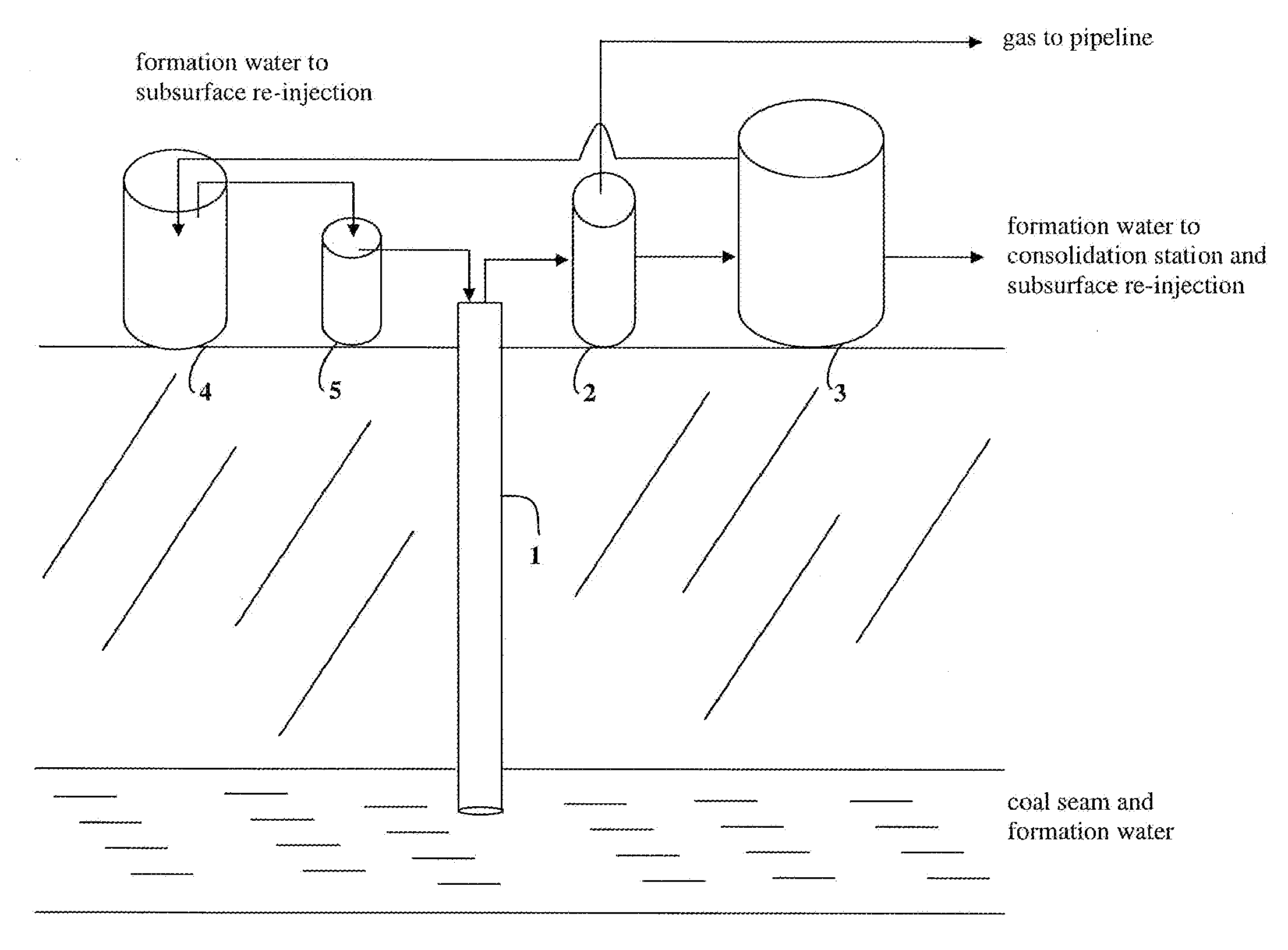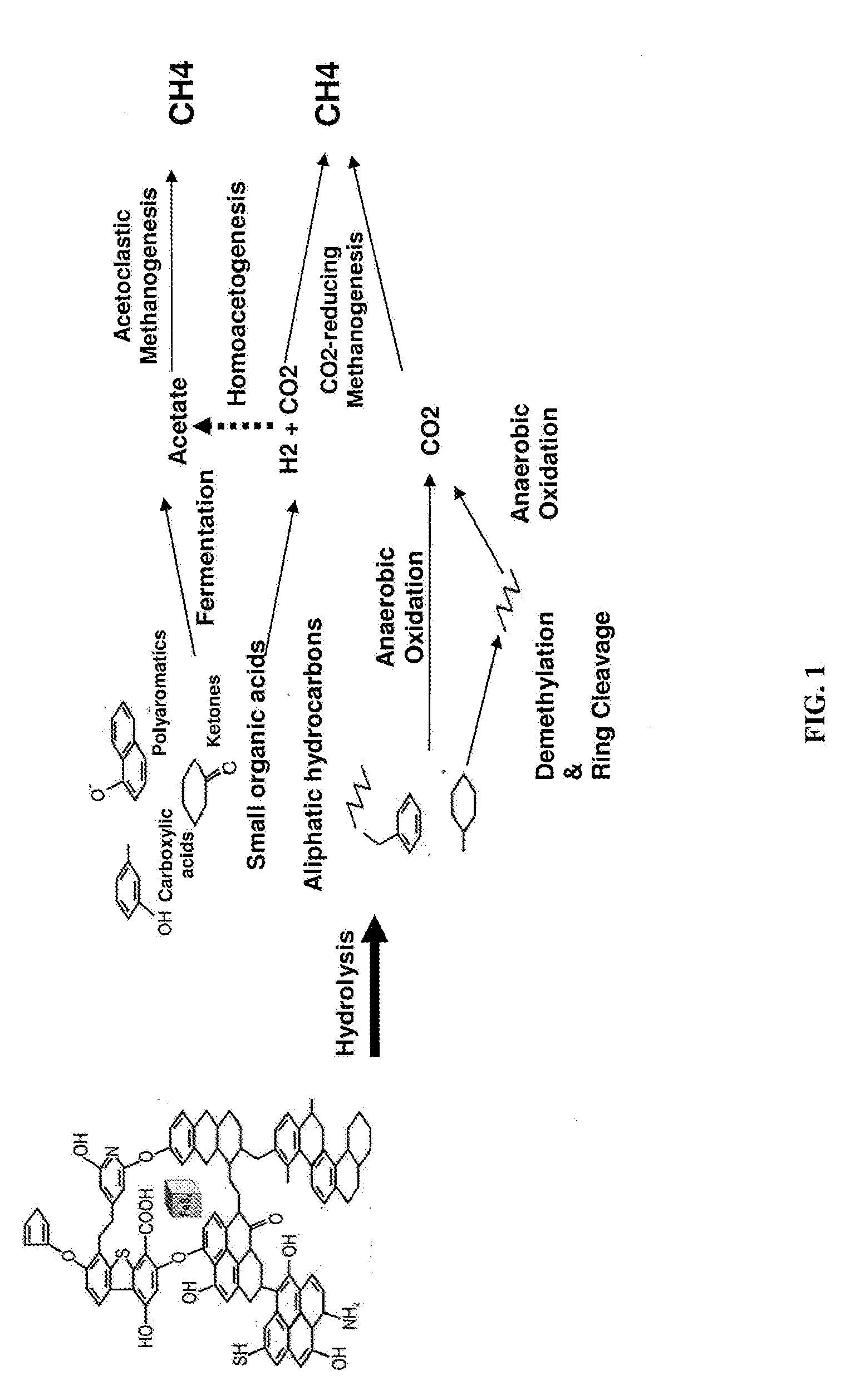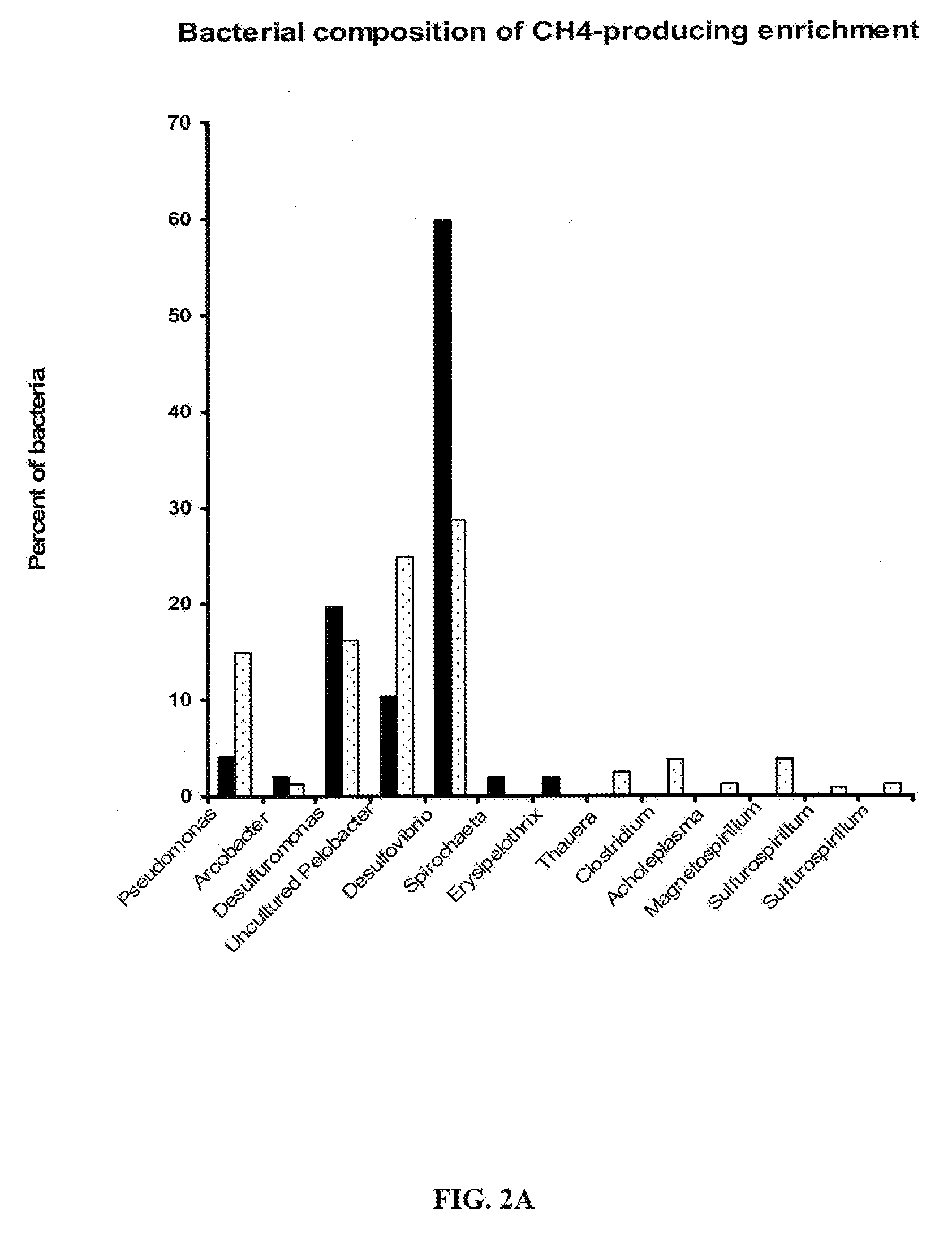Methods to stimulate biogenic methane production from hydrocarbon-bearing formations
a hydrocarbon-bearing formation and biogenic technology, applied in the direction of waste based fuel, microorganisms, borehole/well accessories, etc., can solve the problems of not using enzyme analysis to identify novel stimulants, not revealing the identification or use of specific genes encoding enzymes involved in coal to methane from methanogenic bacteria within the consortia, etc., to increase the biogenic production of methane and increase the effect of methane production
- Summary
- Abstract
- Description
- Claims
- Application Information
AI Technical Summary
Problems solved by technology
Method used
Image
Examples
example 1
Sampling and Enrichment of Methane-Producing Microorganisms from Coalbed Methane Well
[0084]A volume of 200 L of formation water was collected from the reservoir tank and a volume of 20 L from the separation tank in a coalbed methane well located in the San Juan Basin, Colo., USA. The water samples were then filtered with a series of sterile sieves from 1 mm to 45 μm to remove large pieces of coal and oils that came with the formation water. A subsample was then transferred into a 1 L sterile bottle and sparged with N2 using a portable tank and a glass pipette. The bottles were then sealed with a butyl stopper and used for inoculations.
[0085]The media consisted of a mineral base and crude coal as carbon source dispensed into Hungate tubes with 5 ml of culture and 0.5 g of coal as sole carbon source.
[0086]Medium composition for methanogenic enrichments and pure cultures:
[0087]Per 1 L of sterile produced water:
[0088]NH4Cl 0.5 g
[0089]KH2PO4 0.75 g
[0090]K2HPO4 1.5 g
[0091]commercial (ATCC...
example 2
Characterization of Community of Microorganisms from Coalbed Methane Well and the Enrichment Methane-Producing Microorganisms
[0100]Total community DNA was extracted from the formation water samples with methods optimized to efficiently separate nucleic acids from coal present in the formation waters and enrichments. Genomic libraries were constructed from the reservoir tank water sample using multiple methods to assess potential biases and to efficiently capture the total microbial populations including bacteria, archaea and eukarya. Previous genomic analyses on the reservoir tank revealed a relative low complexity compared to environments such as soils or surface sea water. Notably, the absence of eukaryotic cells was striking. There were two dominant cell lineages in the genomic data corresponding to the Proteobacteria, Arcobacter and Chrysiogenes whose genomes can be re-assembled from the community DNA. Their metabolism may be associated to the degradation of oils and other hydro...
example 3
Stimulation of Methane Production
[0126]The availability of a defined microbial assemblage producing methane from coal in vitro, as well as a suite of strains capable of aerobic coal degradation prompted laboratory experiments where various stimulants were tested for their effect on methane production. FIG. 13 shows the results of stimulation of the culture system with varying amounts of oxygen (2%, 4%, and 10% O2), and electron acceptors sulfate (at 0.1 mM, 1 mM and 10 mM) and nitrate (at 0.1 mM, 1 mM and 10 mM).
[0127]The greatest increase in methane production was observed in response to limited pulses of oxygen suggesting a limiting factor for methane production from coal may be the electron flow derived from aerobic hydrocarbon degradation. This degradation is stimulated by the addition of oxygen as reactant for the oxygenase-classes of enzymes present in some of the strains included in the DMA. However, when oxygen is applied at higher than optimal levels it represses methanogen...
PUM
| Property | Measurement | Unit |
|---|---|---|
| volume | aaaaa | aaaaa |
| volume | aaaaa | aaaaa |
| pore sizes | aaaaa | aaaaa |
Abstract
Description
Claims
Application Information
 Login to View More
Login to View More - R&D
- Intellectual Property
- Life Sciences
- Materials
- Tech Scout
- Unparalleled Data Quality
- Higher Quality Content
- 60% Fewer Hallucinations
Browse by: Latest US Patents, China's latest patents, Technical Efficacy Thesaurus, Application Domain, Technology Topic, Popular Technical Reports.
© 2025 PatSnap. All rights reserved.Legal|Privacy policy|Modern Slavery Act Transparency Statement|Sitemap|About US| Contact US: help@patsnap.com



